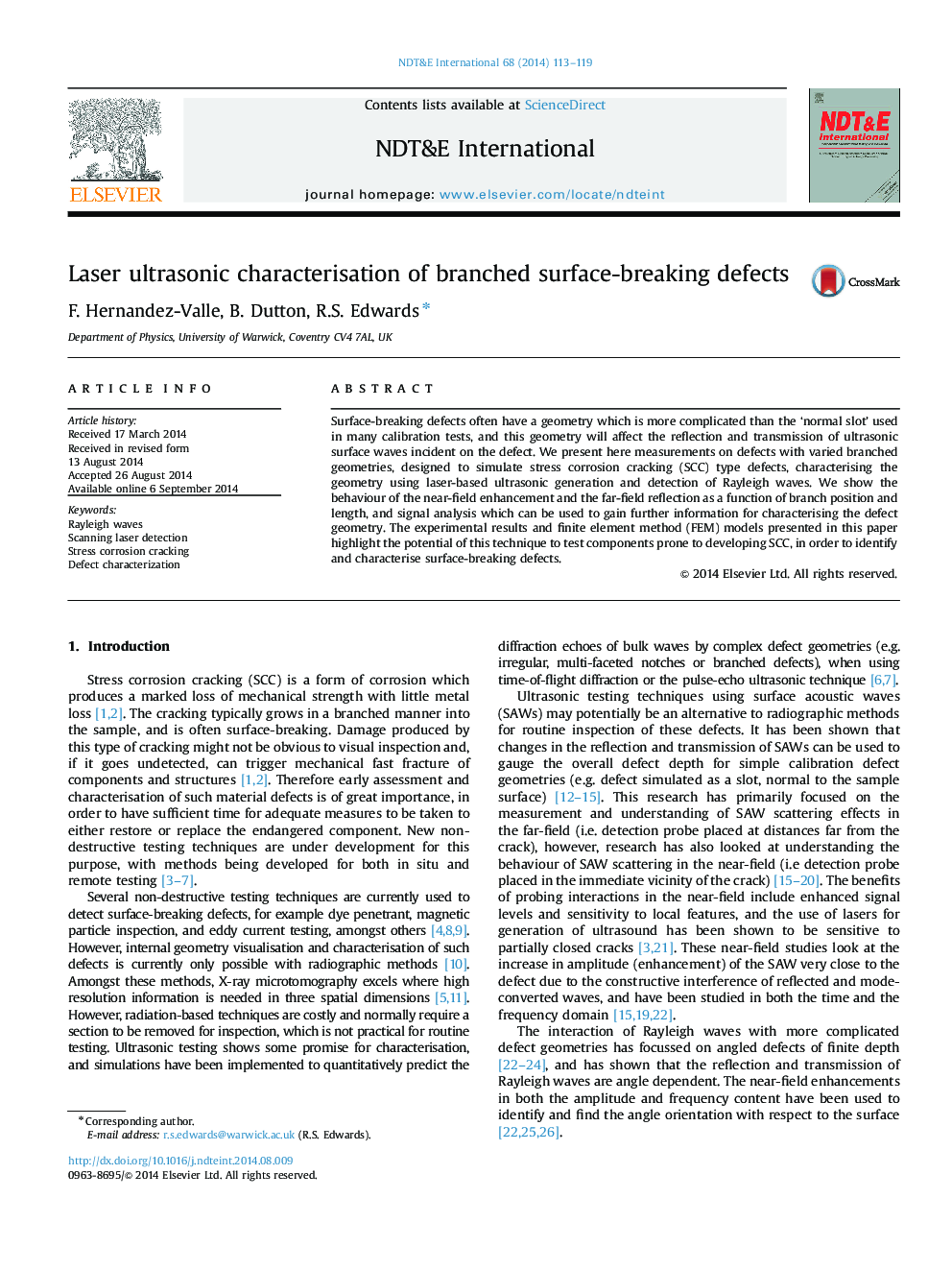| Article ID | Journal | Published Year | Pages | File Type |
|---|---|---|---|---|
| 6758432 | NDT & E International | 2014 | 7 Pages |
Abstract
Surface-breaking defects often have a geometry which is more complicated than the 'normal slot' used in many calibration tests, and this geometry will affect the reflection and transmission of ultrasonic surface waves incident on the defect. We present here measurements on defects with varied branched geometries, designed to simulate stress corrosion cracking (SCC) type defects, characterising the geometry using laser-based ultrasonic generation and detection of Rayleigh waves. We show the behaviour of the near-field enhancement and the far-field reflection as a function of branch position and length, and signal analysis which can be used to gain further information for characterising the defect geometry. The experimental results and finite element method (FEM) models presented in this paper highlight the potential of this technique to test components prone to developing SCC, in order to identify and characterise surface-breaking defects.
Related Topics
Physical Sciences and Engineering
Engineering
Civil and Structural Engineering
Authors
F. Hernandez-Valle, B. Dutton, R.S. Edwards,
